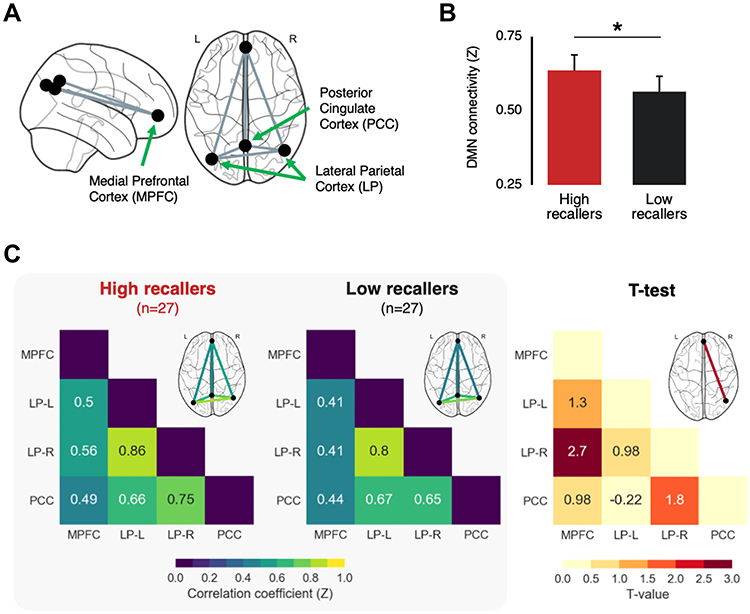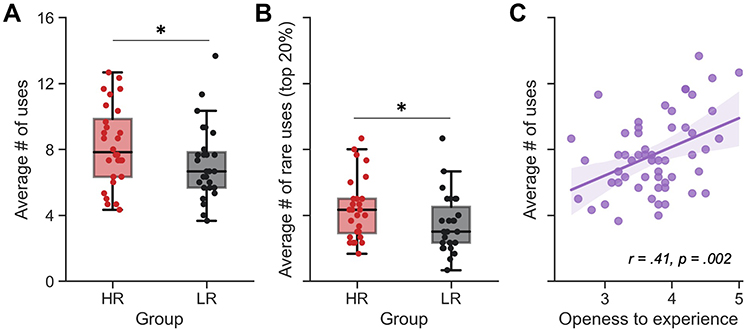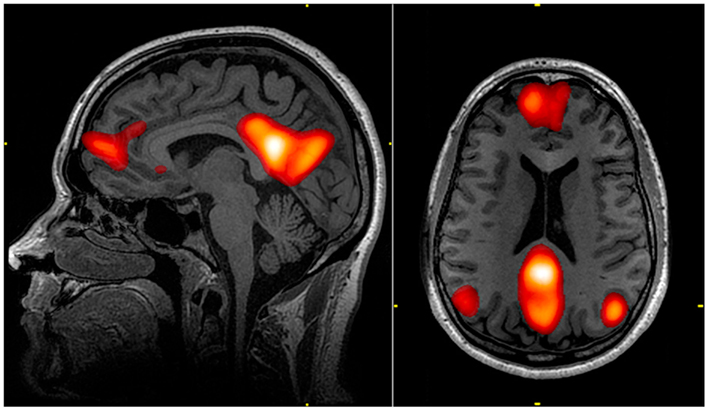Dream recall and creativity

For a long time, it was thought that dreaming occurred in the rapid eye movement phase of sleep (REM sleep). It is now well established that it can occur at any stage of sleep and, therefore, is not exclusive to a specific global vigilance state. Today, there is no known physiological correlate of a dream, which means that it is not possible to know for sure whether someone is actually dreaming at a specific time of the night. Consequently, most empirical research on dreaming has been based on reports collected after waking the dreamer. Even then, a fundamental limitation of dream research is that the absence of dream recall does not necessarily mean the absence of dreams. Whether dreams are remembered depends on what are known as state components (stage of sleep, level of arousal before awakening, relevance of the dream) and trait components, which would be person-specific factors that are associated with greater or lesser ability to recall dreams (e.g., personality traits).

Focusing on the latter, it has been shown that there are people who remember a lot of dreams, the “high recallers” (HR), who remember more than 5 dreams per week, and others who remember little, the “low recallers” (LR), who remember less than 2 dreams per month. Differences are gradually being found between the two groups of people, not only during sleep but also during wakefulness. A PET study, a technique that allows to see brain zonal activation, showed higher cerebral blood flow in HR compared to LR in the temporoparietal junction (TPJ) and medial prefrontal cortex (MPFC) during REM sleep, N3 sleep and wakefulness. N3 is the deepest sleep of the NREM phases. In a second study conducted with functional MRI in a different set of volunteers, increased functional connectivity, more activity in their connections, has been seen between default neural network nodes and memory regions 5 minutes after awakening in HR compared to LR.
Consistent with these findings, lesions of these same areas (TPJ and MPFC) are associated with a global or partial cessation of dream recall, even in the absence of any concurrent sleep disturbance. All this evidence suggests that the temporoparietal junction and the medial prefrontal cortex play a key role in dream production or recall. These two regions and the posterior cingulate/precuneus cortex (PCC) are the central nodes of the default mode network (DMN), a set of functionally coupled brain regions. This set of brain centers is responsible for brain activity when the organism is at rest and is involved in mind wandering, self-related thoughts, inferential reasoning, forecasting the future, and episodic memory.

The finding of greater spontaneous activity within the default mode network, along with greater functional connectivity upon awakening between its core regions in HRs compared to LR, supports the hypothesis of differential global cognitive and brain functioning between high and low dream recall. This idea was first put forward by Schonbar 1 who postulated, in his so-called lifestyle hypothesis, that remembering many dreams is part of a general lifestyle characterized by “creativity, richness of fantasy, introversion, introspection, field independence, and divergent thinking.” Several subsequent studies have supported this hypothesis by showing significant correlations between dream recall frequency (DRF) and creativity and between DRF and personality traits such as openness to new experiences and a very loose boundary structure (i.e., the propensity to be more open, trustworthy, vulnerable, and sensitive) and to be more susceptible to anxiety. These observations fit well with the emerging view that sleep and creative thinking belong to the same family of spontaneous mental processes.
Several papers indicate that both sleep and creativity may involve regions of the DMN, and especially prefrontal areas. With respect to sleep, studies have found that the functional connectivity of the DMN changes across sleep stages, weakening greatly during deep NREM sleep (which is typically associated with no or little dream recall) and, conversely, increasing to a hyperassociated state during REM sleep, the sleep stage in which the proportion of dream recall upon awakening is highest. These findings have led to the hypothesis that default neural network activity during sleep may be the substrate of dreams. As for creativity, growing evidence suggests that creativity scores correlate positively with the activation of the default neural network, as well as with the functional coupling between this network and executive regions. In summary, the available data suggest that a high frequency of dream recall is related, on the one hand, to default neural network activity and, on the other hand, to enhanced creativity.

A group from the Lyon Neuroscience Research Center has studied dream recall and creativity in HR and LR 2. No significant differences in memory abilities were found between HR and LR. Second, there were no significant differences in PSQI score. Third, there were no differences in anxiety levels, as measured by the STAI self-report scale. Fourth, the Big Five personality dimensions were not significantly different between the two groups; however, there was a tendency (p=0.07) for a higher score on agreeableness in HR than in LR, a dimension related to the tendency to be compassionate and cooperative rather than suspicious and antagonistic toward others.
Regarding functional connectivity, the results from Vallat’s group show higher cerebral blood flow in HR compared to LR in these same two regions during both sleep and wakefulness. These converging results thus provide strong evidence that the ability to remember dreams is linked to activity within these two brain regions.
HR and LR have a differential neurophysiological profile. HR have a greater amplitude of brain responses to novel auditory stimuli during both sleep and wakefulness, as well as longer duration of intra-sleep wakefulness and nocturnal awakenings, regardless of sleep stage, and with no other differences in sleep micro- or macrostructure. There is also an increase in neurophysiological markers of ascending and descending attentional processes in HRs during wakefulness.
Creativity is a complex and multifaceted capacity involving several cognitive processes and traits (e.g., memory, associative reasoning, flexibility, etc.) combined in varying proportions across individuals. The association between creativity and dream recall is of particular interest given that the generation of creative ideas is thought to rely on preferential recruitment of default neural network regions, and in particular the MPFC. Barrett 3 recalled an old hypothesis that “dreaming is essentially our brain thinking in another neurophysiological state, and therefore likely to solve some problems that our waking mind has got stuck on.”
People who remember dreams a lot have a specific cognitive and brain functioning profile, involving higher baseline activity and functional connectivity in DMN regions, which in turn could promote creativity and dreaming ability in these individuals. Personality differences between HR and LR are either non-existent or very subtle.
Future work could test whether DRF enhancement methods (such as keeping a dream diary) would result in increased creativity scores and DMN functional connectivity in a pre- / post-design in the same individuals, preferably those who recall few dreams. If confirmed, DRF enhancement methods could become a creativity enhancement method.
References
- Schonbar RA (1965) Differential dream recall frequency as a component of “lifestyle”. J Consult Psychol 29(5): 468. ↩
- Vallat R, Türker B, Nicolas A, Ruby P (2022) High Dream Recall Frequency is Associated with Increased Creativity and Default Mode Network Connectivity. Nat Sci Sleep 14: 265-275.doi: 10.2147/NSS.S342137 ↩
- Barrett D (2017) Dreams and creative problem-solving. Ann NY Acad Sci 1406(1): 64–67. ↩